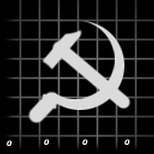China Overview
- Population: 1.3 billion
- Currency: yuan
- Guinness World Records: most people painting each other's faces simultaneously in one location (13,413), largest bottle of cooking oil (containing 3212 litres), most couples hugging (3009 couples).
- Internet users: 135 million
- Milk beer: from Inner Mongolia, an alternative to the traditional mare's-milk wine.
- Squirrel fish: whole mandarin fish deep-fried and manipulated to resemble a squirrel.
- Number of chinese characters: over 56,000
index The planned economic system
Planned economy is an economic system in which the state directs the economy. It is an economic system in which the central government controls industry such that it makes all decisions regarding the production and distribution of goods and services.
|
What are categories of the Planed Economy? In case of a Command Economy, both state-owned and private enterprises receive guidance and directives from the government regarding production capacity, volume, modes of production and course of their actions. Planned economic system is broadly segregated into two groups – Centralized and Decentralized. The centralized or centrally Planned Economy, as prevalent in former Soviet Union, is a more familiar concept between the two. The decentralized Command Economy, on the other hand, is more theoretical in nature with little or no application in the actual economic spheres. |
 | What are doubts on the planed economic system? A fundamental problem with planned economies is that in a complex and changing economic system. Is it possible to plan for everything? For instance, planned economies usually suffer a shortage of spare parts, because no one plans for machines to break down. Secondary effects such as environmental impact are often ignored. Furthermore, planners do not have control of the purchase of goods, so they have to guess what consumers really want. |
Inaccurate forecasts are amplified by a long planning cycle, causing chronic shortages and surpluses. Finally, individuals have little incentive to address these problems, because they are rewarded on meeting planned targets, not on improving the overall system. |
What are differences between a planned economy and a market economy? Management-as-planning/adhering focuses on creating a plan that becomes a blueprint for action, then managing implementation by measuring adherence to the plan. Management-as-organizing/learning focuses on organizing work so that intelligent agents know what to do by looking at the work itself, and improve upon their implementation through a learning process. |
What are characteristic features of Command Economy? By nature, a Command Economy is more stable, guaranteeing constant exploitation of the existing resources. It is least affected by financial downturns and inflations.
In a carefully planned Command Economic system, both surplus production and unemployment rates remain at a reasonable level
The steady nature of Planned Economy encourages investments in long-standing project-related infrastructures without any possibility of financial recessions. Command Economy emphasizes more on collective benefits, rather than the requirements of a single individual. Under such circumstances, rewards, wages and other monetary benefits like bonus are distributed on the basis of the joint rendering of services. This is how Planned Economy actually eradicates the profit-making at individual levels. |
| What are advantages of economic planning? Stability
Long-term infrastructure investment can be made without fear of a market downturn leading to abandonment of a project. This is especially important where returns are risky or where the return is diffuse.
Meeting collective objectives
A planned economy eliminates the individual profit motives as the driving force of production and places it in the hands of the state planners to determine what the
| 
|
appropriate productions in those different sets of goods is. The government can harness land, labor, and capital to serve the economic objectives of the state. Consumer demand can be restrained in favor of greater capital investment for economic development in a desired pattern. The state can begin building a heavy industry at once in an underdeveloped economy without waiting years for capital to accumulate. |
What are disadvantages of economic planning? 1) Inefficient resource distribution: surplus and shortage
2) Suppression of economic democracy and self-management
3) Economic planning versus the command economy
The planned economy stands thereby contrary to the free-market economy in which different participants in the economy without previous tuning produce goods with the goal of exchanging these on a market without the need for a property is determined exactly. China and former USSR and are perhaps two of the best instances of Command Economy. Though many countries now-a-days are switching off from Planned Economy to Market or Mixed Economy, yet nations like North Korea and Cuba are some countries where Planned Economy still exists in full form.? |

HOTMost Popular Topics

There is no sincerer love than the love of food.

Because of its size, China has great climatic diversity. Generally, the best time to visit China is during spring and autumn.

Chinese is the most commonly used language in China, and one of the most commonly used languages in the world.

China has many traditional festivals, including the Spring Festival, the Lantern Festival, the Dragon Boat Festival.

In the Chinese zodiac, twelve animals are used to denote the year of a person's birth: rat, ox, tiger, rabbit, dragon.

China, one of the world's most ancient civilizations, has a recorded history of nearly 4,000 years..